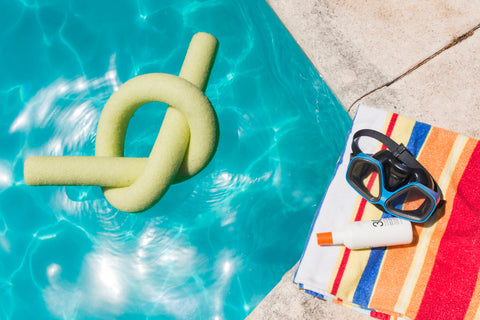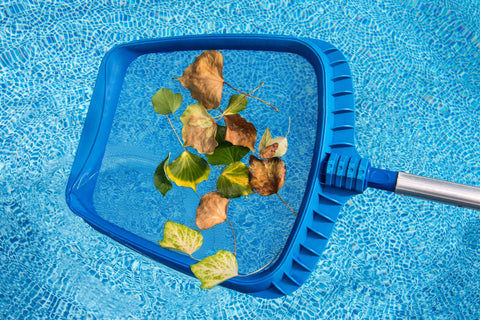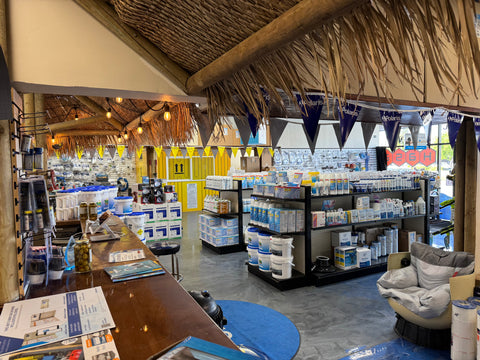Pool cleaners are essential for maintaining crystal-clear water, but they rely on properly functioning parts to operate effectively. If you have a Polaris automatic cleaner or a different brand, it's important to know the parts. Understanding the care needed can help you save time and money. It can also help your equipment last longer.
Regular maintenance and timely replacement of worn parts are important. They help keep your pool cleaner working well throughout the swimming season. From drive belts and brushes to filters and hoses, each component plays a crucial role in keeping your pool debris-free. When parts begin to wear down, your cleaner's efficiency drops significantly.
Pool maintenance involves more than just the machines. It also includes managing water chemistry. Products like Aqua Silk and other treatment systems help with this. By taking care of your equipment and balancing chemicals, you create a complete way to maintain your pool. This ensures clean and safe swimming conditions.
Overview of Pool Cleaner Parts
Pool cleaners rely on multiple essential components working together to maintain water cleanliness. Identifying correct part numbers and selecting genuine replacements ensures optimal performance and equipment longevity.
Key Components of Pool Cleaners
Pool cleaners contain several critical parts that work in unison to remove debris and maintain water quality. The drive motor serves as the primary power source, propelling the cleaner throughout your pool.
The filtration system includes bags or cartridges that capture dirt and debris. These components require regular replacement to maintain suction power and cleaning efficiency.
Wheels and tracks provide mobility across pool surfaces. They experience significant wear from constant contact with pool floors and walls.
Hoses and connections transport water and debris from the pool to the filtration system. Damaged hoses reduce suction and compromise cleaning performance.
The pressure relief valve regulates water flow and prevents damage from excessive pressure. This component protects internal mechanisms from hydraulic stress.
Brushes and scrubbers agitate debris from surfaces before collection. Different brush types suit various pool surface materials and cleaning requirements.
How to Identify the Right Part Number
Locating your pool cleaner's model number is the first step in finding correct replacement parts. Check the main unit, motor housing, or manufacturer's label for this information.
Part numbers appear on individual components or in your owner's manual. These alphanumeric codes ensure exact compatibility with your specific cleaner model.
Measure worn parts when numbers are illegible or missing. Record dimensions, connection types, and any unique features to match replacement components.
Contact your manufacturer's customer service with your model information. They provide accurate part numbers and compatibility guidance for your specific unit.
Take photos of damaged parts before removal. Visual references help verify correct replacements when ordering from suppliers or retailers.
Benefits of Using Genuine Replacement Parts
Genuine parts maintain your cleaner's original performance specifications and reliability. Manufacturers design these components specifically for your model's requirements and operating conditions.
Warranty protection often requires genuine parts to remain valid. Using aftermarket components may void coverage and leave you responsible for future repairs.
Quality materials in genuine parts provide longer service life compared to generic alternatives. This reduces replacement frequency and long-term maintenance costs.
Proper fit and function prevent damage to other cleaner components. Incompatible parts can cause premature wear or mechanical failures in connected systems.
Genuine parts undergo rigorous testing to meet safety and performance standards. This ensures reliable operation and protects your investment in pool cleaning equipment.
Understanding Polaris Pool Cleaner Parts
Polaris pool cleaners contain several key components that work together to maintain your pool's cleanliness. Identifying the correct part numbers and compatible brands ensures proper functionality and extends your cleaner's lifespan.
Most Common Polaris Pool Parts
The drive belt transfers power from the motor to the wheels and is one of the most frequently replaced components. This rubber belt stretches and wears over time, causing reduced cleaning performance.
Filter bags capture debris and require regular cleaning or replacement. Different Polaris models use specific bag sizes and materials designed for optimal filtration.
The sweep hose agitates debris from pool surfaces and corners. These hoses often develop cracks or tears from UV exposure and chemical contact.
Wheels and tires provide traction and movement across pool surfaces. The rubber compounds degrade over time, especially in chlorinated water environments.
Pressure relief valves regulate water flow through the system. These valves can become clogged with debris or calcium buildup, affecting cleaning patterns.
Backup valves reverse the cleaner's direction when it encounters obstacles. Internal springs and diaphragms wear out with repeated use.
Compatibility by Model and Part Numbers
Each Polaris pool cleaner model requires specific parts identified by unique part numbers. The Polaris 280, 380, and 480 models share some components but have distinct requirements for others.
Part numbers appear on original components and in manufacturer documentation. You should reference these numbers when ordering replacements to ensure proper fit and function.
Cross-reference charts help identify compatible parts between different Polaris models. Some newer parts may replace older versions with improved designs or materials.
Model-specific components include different wheel assemblies, hose lengths, and filter bag configurations. Using incorrect parts can damage your cleaner or reduce performance.
Reputable Polaris Brands and Sources
Polaris manufactures original equipment manufacturer (OEM) parts through their official distribution network. These parts carry manufacturer warranties and guaranteed compatibility.
Authorized dealers stock genuine Polaris components and provide technical support. They offer rebates and promotional programs for qualifying purchases.
Third-party manufacturers produce compatible replacement parts at lower costs. Quality varies significantly between different aftermarket suppliers.
Online retailers like The Pool Guy Store offer extensive Polaris parts inventories with detailed diagrams and part identification guides. Many provide free shipping on orders over specific dollar amounts.
Essential Accessories and Replacement Items
Regular maintenance requires specific replacement parts to keep your pool cleaner operating efficiently. Key components include filtration elements, mechanical drive systems, and water flow control mechanisms that wear down with normal use.
Hoses, Bags, and Filters
Replacement hoses form the primary connection between your cleaner and the pool's filtration system. Most Polaris models use segmented hose sections that connect with threaded couplings.
Standard hose lengths range from 25 to 40 feet depending on your pool size. Each segment typically measures 3 feet and includes specific part numbers for ordering replacements.
Debris bags capture leaves, dirt, and other contaminants during cleaning cycles. These mesh or fabric bags require regular emptying and eventual replacement as material degrades.
Different bag types include:
- Fine mesh bags - capture small particles and sediment
- Standard bags - handle typical debris like leaves and twigs
- Zipper bags - provide easy access for emptying contents
Filter screens prevent large debris from entering the cleaner's internal mechanisms. These components need cleaning after each use and replacement when torn or clogged beyond cleaning.
Drive Belts and Wheels
Drive belts transfer power from the cleaner's turbine to the wheel assembly. These rubber components stretch and crack over time, requiring replacement to maintain proper traction.
Belt replacement involves accessing the cleaner's bottom housing. Most Polaris models use specific belt part numbers that correspond to individual cleaner models.
Wheels and tires provide movement across pool surfaces. Front wheels typically include bearings that allow directional changes, while rear wheels focus on forward propulsion.
Common wheel issues include:
- Worn tire treads reducing traction
- Damaged bearings causing erratic movement
- Cracked wheel hubs from chemical exposure
Wheel replacement kits often include multiple components with specific part numbers for your cleaner model. These kits ensure compatibility and proper installation.
Valves and Assemblies
Pressure relief valves regulate water flow through the cleaner system. These spring-loaded components prevent excessive pressure that could damage internal parts.
Valve assemblies include multiple seals and springs that wear with regular use. Part numbers identify specific valve types for different cleaner models.
Thrust jet assemblies direct water flow to create forward movement. These components include directional nozzles and internal chambers that channel water pressure effectively.
Back-up valves automatically reverse cleaner direction when stuck against pool walls or obstacles. These timing-based valves use internal mechanisms that require periodic replacement to maintain proper cycling intervals.
Pool Maintenance With Aqua Silk and Alternative Solutions
The Aqua Silk system offers a chlorine-free approach to pool maintenance that works alongside your existing equipment. This system integrates seamlessly with automatic pool cleaners and equipment parts to maintain water quality without harsh chemicals.
Benefits of Aqua Silk in Pool Care
The Aqua Silk system uses only three core products to maintain clean, clear pool water. This chlorine-free sanitizer creates softer water that's gentler on your skin, eyes, and swimwear.
Your pool equipment benefits significantly from this system. The stable sanitizer formula reduces corrosion on metal components and extends the life of pool liners. Unlike traditional chlorine systems, Aqua Silk won't bleach swimsuits or cause skin irritation.
The system maintains effective sanitization without the harsh chemical smell. You'll notice your pool water feels silkier and more comfortable for swimming. This makes extended pool sessions more enjoyable for your family.
Key advantages include:
- Reduced equipment corrosion
- Gentler on skin and hair
- No chlorine odor
- Extended liner life
- Stable sanitization levels
Using Chemical-Free Systems With Cleaners
Your automatic pool cleaners work effectively with Aqua Silk systems. The stable chemical composition won't interfere with cleaner operation or damage rubber seals and gaskets.
Polaris and other brand cleaners maintain their performance standards in Aqua Silk-treated water. The system's gentle formulation actually helps preserve cleaner components longer than traditional chlorine treatments.
Pool cleaner parts experience less chemical stress with this system. Rubber components, seals, and plastic parts maintain flexibility and durability. You'll likely need fewer replacement parts over time.
The system works particularly well with robotic cleaners. These units' electronic components and filtration systems operate smoothly without chemical interference. Your cleaner's sensors and navigation systems remain accurate in the treated water.
Integrating Pool Parts and Chemical Systems
Proper integration requires coordinating your chemical system with equipment maintenance schedules. Replace worn pool cleaner parts before switching to Aqua Silk to ensure optimal performance from both systems.
Your filtration system plays a crucial role in this integration. Clean or replace filter cartridges before implementing the new chemical system. This ensures proper water circulation and chemical distribution.
Compatible equipment includes:
- Automatic pool cleaners
- Robotic cleaning systems
- Filtration pumps
- Heating systems
- Saltwater generators
Monitor your equipment performance during the transition period. Some pool parts may require adjustment periods when switching from chlorine-based systems. Check seals, gaskets, and moving parts regularly during the first few weeks.
Brand-specific parts from manufacturers like Polaris typically maintain warranty coverage when used with approved chemical systems. Verify compatibility before making changes to avoid voiding equipment warranties.
Troubleshooting and Maintenance Tips
Effective troubleshooting starts with systematic diagnosis of common issues like poor water flow, irregular movement patterns, and debris collection problems. Identifying the correct Polaris pool cleaner parts and their specific part numbers ensures proper repairs and optimal performance.
Diagnosing Pool Cleaner Issues
Start by checking your Polaris pool cleaner's water flow and suction power. Low water pressure often indicates clogged filters or blocked hoses that need immediate attention.
Examine the cleaner's movement pattern in your pool. If it moves erratically or stays in one area, inspect the drive belts and wheel assemblies for wear or damage.
Check for visible debris in the filter bag or canister. A full or torn filter reduces cleaning efficiency and can strain the motor components.
Common diagnostic steps:
- Test water flow at the wall fitting
- Inspect hose connections for air leaks
- Examine wheels for proper rotation
- Check filter condition and capacity
Monitor unusual sounds during operation. Grinding or squealing noises typically indicate worn internal components that require replacement parts.
Verify that all Polaris pool cleaner parts move freely without obstruction. Stuck or jammed components often signal the need for lubrication or part replacement.
When to Replace Polaris Parts
Replace filter bags when they show tears, holes, or excessive stretching that allows debris to escape back into your pool.
Drive belts require replacement when they become cracked, stretched, or slip during operation. Most belts last 1-2 swimming seasons with regular use.
Wheels and tires need replacement when tread wear becomes excessive or cracks appear in the rubber. Worn wheels reduce traction and cleaning coverage.
Replacement timeline for common parts:
| Component | Typical Lifespan | Signs of Wear |
|---|---|---|
| Filter bags | 6-12 months | Tears, stretching |
| Drive belts | 1-2 seasons | Cracking, slipping |
| Wheels | 2-3 seasons | Worn tread, cracks |
| Hoses | 3-5 years | Stiffness, leaks |
Backup valves should be replaced if they stick in one position or fail to create the sweeping motion necessary for thorough cleaning.
Replace thrust jets and sweep hose scrubbers when they become clogged beyond cleaning or show structural damage.
Sourcing the Correct Part Number
Locate your Polaris pool cleaner's model number on the main body or in the original documentation. This number determines which specific parts fit your unit.
Reference the parts diagram in your owner's manual to identify the exact component you need. Each part has a unique part number that ensures compatibility.
Essential information for part ordering:
- Complete model number
- Specific part number from diagram
- Manufacturing date if available
- Current part condition for comparison
Contact authorized Polaris dealers or visit the manufacturer's website to verify part numbers before purchasing. Using incorrect parts can damage your cleaner or void warranties.
Keep a maintenance log with part numbers and replacement dates. This record helps you order the correct Polaris pool cleaner parts and track component lifecycles.
Cross-reference part numbers with multiple suppliers to ensure authenticity. Genuine Polaris parts maintain optimal performance and longevity compared to generic alternatives.
Frequently Asked Questions
Pool cleaner owners often need help with several things. They may want to know how long parts last. They might need help identifying their model. Troubleshooting operational issues can also be a concern. Understanding warranty coverage is important too. They may need to access technical documentation and find the right manuals for their equipment.
What is the typical lifespan of Polaris pool cleaner components?
Drive belts typically last 1-2 swimming seasons with regular use. Filter bags need replacement when torn or heavily worn, usually after 6-12 months.
Moving parts like wheels and brushes wear down after 2-3 years of normal operation. Hoses can last 3-5 years if properly stored and maintained.
Internal components such as gears and drive mechanisms often function for 5-7 years. Regular maintenance extends component life significantly.
How can I identify my Polaris pool cleaner model?
Check the manufacturer label on your cleaner's body for the model number. This label is usually located on the top or bottom of the unit.
Count the number of wheels on your cleaner. The Polaris 280 has one wheel, while the 380 has three wheels.
Measure your feed hose length. The Polaris 280 includes 31 feet of hose as standard equipment.
Look at the connection type. Pressure-side cleaners like the 280 require booster pump connections, while robotic models use electrical connections.
What are the common causes of a Polaris pool cleaner tangling, and how can it be prevented?
Excess hose length causes the cleaner to move in tight circles and tangle. Adjust hose length to match your pool size properly.
Low water pressure reduces steering capability. Check your booster pump operation and clean any clogged components.
Worn drive belts affect movement patterns. Replace drive belts when they show signs of stretching or cracking.
Pool obstacles like ladders and steps create tangle points. Remove unnecessary pool accessories during cleaning cycles.
What warranty terms come with Polaris pool cleaner parts?
Polaris provides full warranty coverage on all pool equipment for your peace of mind. The company stands behind every product they manufacture.
Warranty terms vary by specific part and model type. Register your product online to expedite any future warranty claims.
Customer service can quickly locate your information when you register your cleaner. This registration saves time during the warranty process.
Where can I find a parts diagram for my Polaris pool cleaner?
Visit the official Polaris Pool support website to access parts diagrams. Choose your specific product model to view detailed breakdowns.
The support section provides user guides, manuals, and spare parts information. Everything you need appears in one convenient location.
Parts blowups show the most common replacement components for each model. These diagrams help identify exact part numbers needed.
How do I obtain a user manual for my aqua silk pool cleaner?
Contact the manufacturer directly through their customer service channels. Most companies provide digital copies of manuals for current models.
Check the manufacturer's official website for downloadable documentation. Many brands offer PDF versions of user manuals online.
Visit pool supply retailers who carry the brand. They often have access to technical documentation and replacement manuals.
Contact local pool professionals who service your cleaner type. They frequently maintain copies of manuals for equipment they service.





